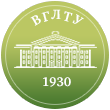Russian Federation
The article summarizes the data on the competitive advantages of innovative forest products in Russia and abroad. It is noted that the Russian market is not completely ready for innovative products that have been intensively developed recently. To ensure universal promotion of new products, it is necessary to use a system of product standardization, improve staff skills, and increase consumer literacy. The problem is that many innovative products are developed abroad and enter the Russian market as a result of foreign investment in the Russian timber industry. The production of composite structural wood materials is due to the fact that in some regions of the world there is a large proportion of low-quality wood raw materials, which cannot be used in industry in the form of balances, technological raw materials and firewood. Innovative technologies make it possible to obtain construction and structural materials from low-quality wood raw materials, in which there are no shortcomings of solid wood. New structural wood materials fill specific market niches, leading to deeper market differentiation. The price factor largely determines the demand for innovative products in the domestic market, otherwise, excess volumes of products are exported to foreign markets.
innovative products, market, forest industry
ВВЕДЕНИЕ
По результатам исследования, выявлено, что в мировой практике сложился устойчивый тренд на такие инновационные продукты лесной промышленности как композитные конструкционные древесные материалы. Это связано с большой долей низкокачественного древесного сырья, а именно балансы, технологическое сырьё, дрова и отходы лесоперерабатывающих производств. Основной объем низкокачественной древесины сосредоточен в странах Восточной и Юго-Восточной Азии, Южной Америки. Для того чтобы предложить рынку качественную продукцию необходимо развивать производство строительных и конструкционных материалов.
Применение новых древесных композитов основывается на принципах технической достаточности и экономической целесообразности. Происходит сокращение доли «универсальных» материалов. От потребителей требуется повышение грамотности и культуры потребления новых продуктов.
В Стратегии развития лесного комплекса Российской Федерации до 2030 года намечен рост производства ДСП до 10,1 млн куб. метров, из которых на экспорт будет отправлено 35%; производства ДВП (без MDF и HDF) до 0,6 млн куб. метров, из которых 32% - экспортная продукция; производства MDF и HDF до 6,4 млн куб. метров, из которых на экспорт придется 41%; производства OSB до3,5 млн куб. метров, из которых экспорт составит 46% [1].
1. Scherbinina E. Proizvodstvo drevesno-polimernyh kompozitov / E. Scherbinina // LesPromInform №5 (119), 2016. URL: https://lesprominform.ru/jarticles.html?id=4443
2. Drevesnye plity i fanera segodnya Cifry, fakty, problemy i perspektivy // LesPromInform №8 (146), 2019. URL: https://lesprominform.ru/jarticles.html?id=5519
3. Nikol'skaya V. Rossiyskiy rynok LVL-brusa Interesnyy rakurs v bol'shom prolete // LesPromInform №4 (134), 2018. URL: https://lesprominform.ru/jarticles.html?id=5028
4. Bogomolov V. Mirovoy rynok drevesnyh plit v 2013-2018 gg. / V. Bogomolov, A. Nikiforova // LPK Sibiri. 2019, №11 URL: https://lpk-sibiri.ru/forest-industry/analytics/rossijskij-rynok-drevesnyh-plit-v-2013-2018-gg/
5. Chen, G., Yu, Y., Li, X. et al. Eur. J. Mechanical behavior of laminated bamboo lumber for structural application: an experimental investigation (2019). European Journal of Wood and Wood Products. pp 1-11. DOI https://doi.org/10.1007/s00107-019-01486-9
6. Ndiwe, B., Pizzi, A., Danwe, R. et al. Eur. J. Particleboard bonded with bio-hardeners of tannin adhesives (2019) 77: 1221. European Journal of Wood and Wood Products November 2019, Volume 77, Issue 6, pp 1221-1223. https://doi.org/10.1007/s00107-019-01460-5
7. Rogachev A.F Tools for sustainability management of socio-ecological systems in the globalizing world / A.F. Rogachev, V.N. Ostrovskaya, A.S. Natsubidze, T.N. Litvinova, E.A. Yakovleva //Advances in Intelligent Systems and Computing. 2018. T. 622. S. 241-247.










